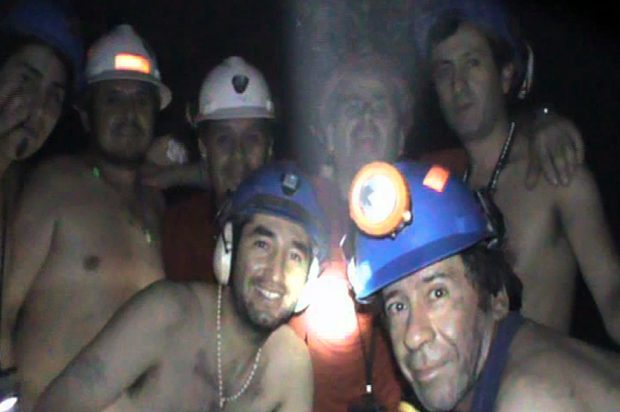Survivors from two dramatic rescues that captivated the world, the 2010 Chilean mine collapse and the 1972 Andes plane crash, gave their advice for how to surivive a lockdown as the number of Latin American coronavirus cases soared past 10,000 Friday.
“Don’t give up guys! A sense of humor is very important,” said Mario Sepulveda, one of 33 Chilean miners who spent more than two months trapped nearly half a mile underground at the San Jose mine in northern Chile.
“Organize your homes! Make and stick to routines so as not to get bored. There are many things you can do!” the upbeat Sepulveda told AFP.
“Let’s do what we are told, it is super important,” Sepulveda said about social distancing and hand-washing requirements. “It’s no longer a political problem, today it is simply a health problem.”

The miners spent 69 days trapped in the depths of the mine, in the Atacama desert 800 kilometers (500 miles) north of Santiago, before being brought to the surface.
“We were in a pretty critical situation. We had no way out, there was no way out of that situation,” said Luis Urzua, shift manager when a rockfall cut off him and his team from the outside world on August 5, 2010.
During their close-quarters confinement, Urzua said “there was a lot of fellowship, a lot of conversation. We got to know some of the work that various other colleagues did in their different roles.”
“The other thing that helped us was prayer,” he said.
“Not asking God to help us, but that people would have the strength and the will to persist in trying to find us,” said Urzua — the last man to be brought to the surface on October 13, 2010.
– ‘Unseen enemy’ –
Carlos Paez was one of 16 survivors from a plane that crashed in the snow-clad Andes on October 12, 1972 as it was taking a Uruguayan rugby team to a match in Chile.
Twelve people died in the crash, while 17 others succumbed over the next few weeks. Infamously, 16 people managed to survive in the extreme conditions by eating the bodies of the dead which had been preserved in the snow.
“There’s a big difference in these two quarantines, if I can call them that. In the first one I experienced, it was 70 days in the Andes mountains but without any resources — 25 degrees below zero, without food, without communication. And I was 18 years old,” Paez told AFP.
The current situation is somewhat easier than his 10 weeks spent sheltering in the plane’s fuselage, he said.
“The only thing to do is nothing at all! They send you to stay at home and wash your hands. And you have all the comforts: television, internet, food. So nothing to complain about,” said Paez, now 66.
“In the cordillera we were fighting against a tangible enemy which was the mountains, the snow and the cold, and now we are fighting against an enemy that we cannot see, which is what generates uncertainty.
“But I am fighting against arrogance. I try to be humble and obey. The message is clear: stay at home and wash your hands. Look how simple that is,” said Paez. “I try to be obedient because I want to live.”
Roberto Canessa, 67, another survivor of the Andes crash, advises people to “look for something to do, start a project.”
“That’s what I did in the mountains. I worked all day so as not to think and not have anxiety or anguish,” he told AFP.
These days, Canessa — a cardiologist — is working on a project to provide emergency mechanical respirators to Uruguayan hospitals to help them cope with an expected flood of coronavirus cases.
“Throughout the world there are no respirators available. Just as in the Andes, we have to depend on ourselves. We are not going to wait for helicopters to come or for someone to bring us respirators to Uruguay,” he said.
“You have to turn this problem into an opportunity. Crises are what causes inventions to come about.”
pa-gv/pb/db/st/
© Agence France-Presse